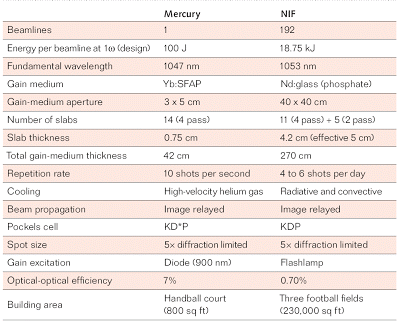The Mercury Laser Moves Toward Practical Laser Fusion
The diode-pumped Mercury laser will deliver 100 J pulses at 10 Hz under automatic control, advancing the development of high-repetition-rate inertial laser fusion. The National Ignition Facility (NIF) at Lawrence Livermore National Laboratory is on target to demonstrate “breakeven”–creating as much fusion-energy output as laser-energy input. The NIF laser will compress a tiny sphere of …



